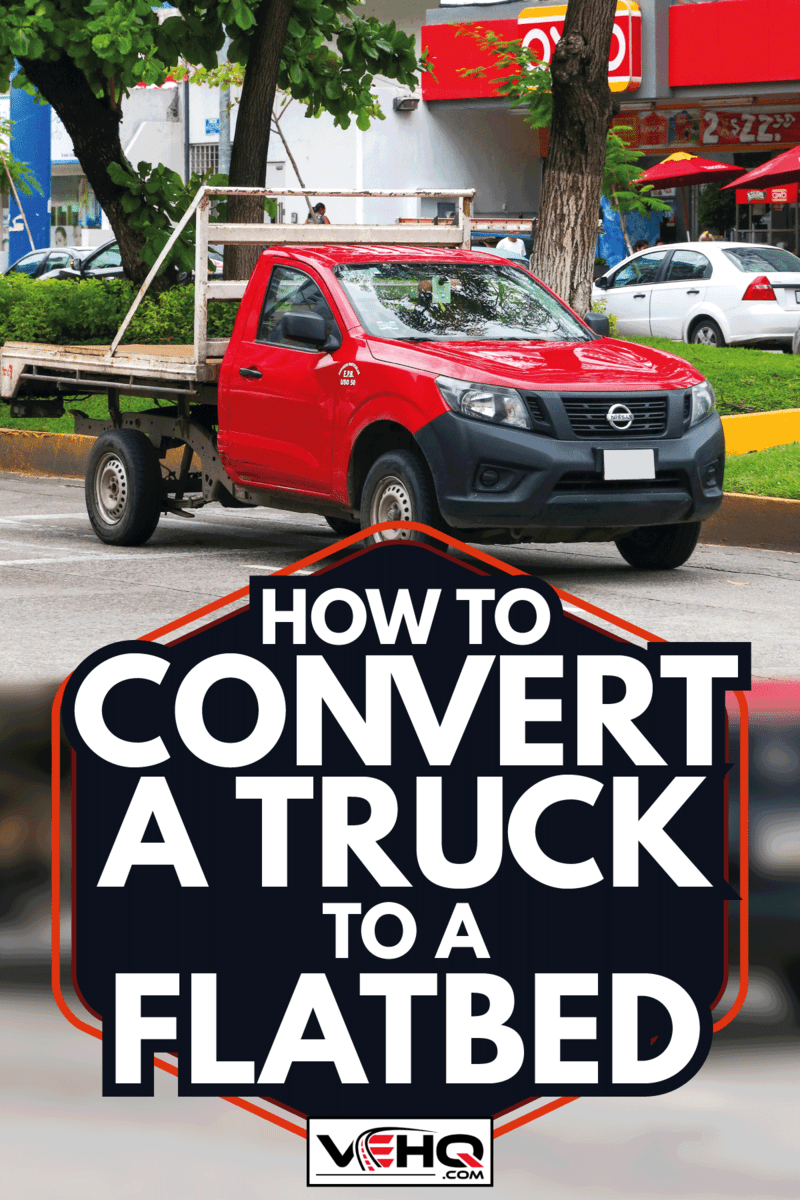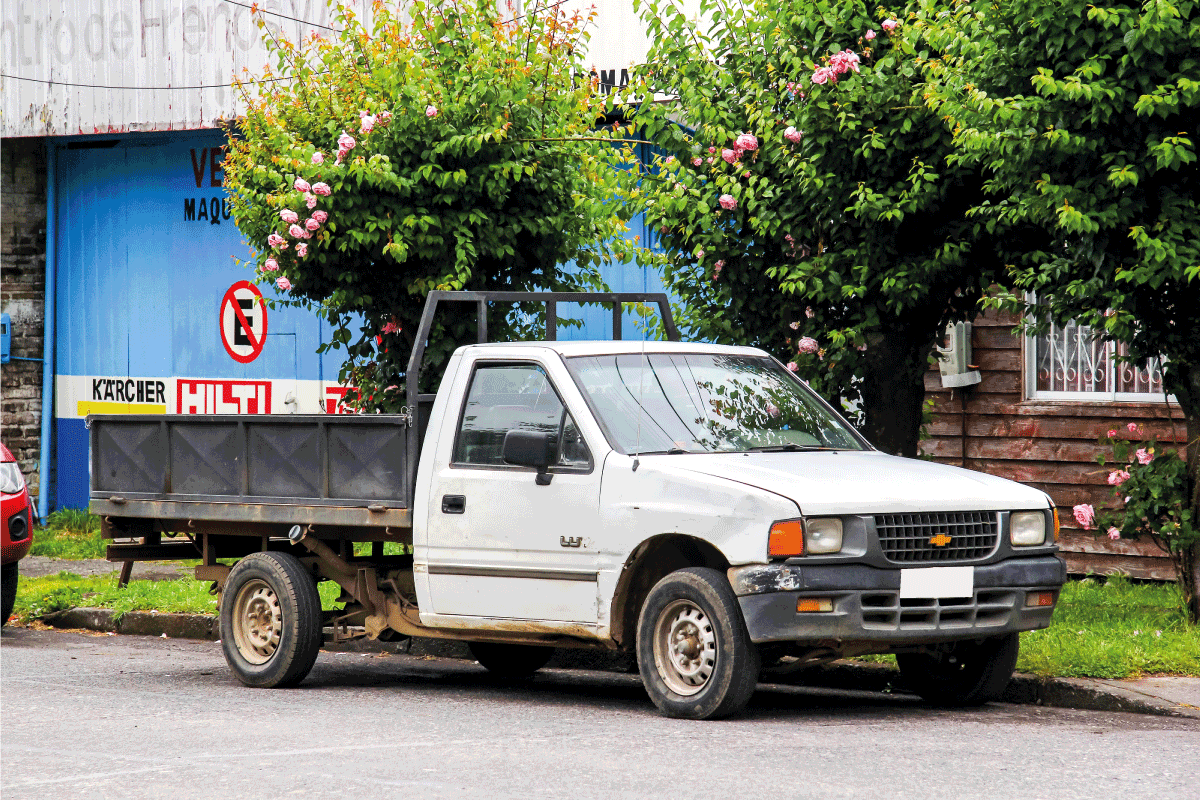Flatbed trucks can become ideal options in carrying heavy and/or unusually shaped loads. Now you’re wondering how you can convert your truck into a flatbed model. We researched for you, and here’s what we found.
Truck conversions to flatbeds vary in difficulties based on different factors, such as the size, shape, and materials used for the existing bed. But the removal of the current bed should be the first step of the operation. Completing that phase allows you to move to the next steps, which are:
1. Remove the tail lights from the truck. 2. Cut metal pieces to size. 3. Weld the steel components to the bed frame and clean them properly. 4. Use a saw to cut the wooden boards and paint them to prevent weather damage. 5. Mount the lumber behind the vehicle. 6. Reinstall the taillights.
Don’t forget to think about certain details while converting your truck to a flatbed carrier. For instance, installing a liftgate will help stabilize the flatbed and the carried load. Keep reading as we talk about the steps to convert a truck into a flatbed. We’ll also discuss other things like how to choose the proper liftgate for your vehicle.

What Is A Flatbed Truck?
Users that want to carry hefty and/or oddly shaped objects can make good use of flatbed trucks. As its name implies, the flatbed has an open and flat design, allowing users to deliver different items without the restrictive walls of a traditional pickup or box truck.

Converting A Truck To A Flatbed
Before converting a truck to a flatbed, you should have a reasonably large space for the vehicle. Space requirements differ depending on the truck. For example, a box truck will need a larger space for you to work on it than a conventional pickup truck.
Additionally, the laboriousness of the project may depend on the material of the existing bed. For instance, working with aluminum can be quite tough. This material has relatively good flexibility, making it difficult to cut and remove with different blades and saws.

Moreover, you should always exercise caution and safety while working on the conversion project. Wear proper gear like gloves, goggles, and long-sleeved clothing to avoid direct contact with hazardous substances.
After understanding those concepts, here’s a guide to help you convert a pickup truck into a flatbed vehicle:
What You’ll Need
- Steel sheets and tubing
- Drill (with appropriately sized bits)
- Circular and reciprocating saws
- Measuring tools (e.g., tape measure or steel tape)
- Grinder with a wire wheel
- Welding tools
- Wrench
- Clamps
- Lumber (optional)
Step-by-Step Guide
- Start removing the existing bed by disassembling the taillights. Then, remove the bolts that secure the bed to the truck. If the bolts don’t come off using a wrench, you may need to cut them out using a saw or cutting torch.
- Cut the steel sheets and tubing to the appropriate size. Use clamps to hold these pieces in place while you’re cutting them.
- Weld the metal pieces onto the bed frame.
- Clean the slag from the welded pieces and complete the seal with finish welds. Make sure to plan this step since doing it asymmetrically can cause the metal to warp.
- For this step, you can either replace the lumber on the pickup truck or use the existing ones, provided that they’re still reasonably intact. But if you want to use new wooden boards, use a measuring tool to determine the right size for the cut.
- Mark the areas you need to cut and use a circular or reciprocating saw to trim the lumber on those locations.
- Paint and seal the boards to prevent them from accruing weather damage. Mount the lumber onto the back of the truck after the paint dries completely.
- Reassemble the tail lights onto the pickup truck.
It’s also optimal that you install a liftgate to your pickup truck to help carry the weight of the load placed on the flatbed. You can also watch the video below to check the process of converting a truck into a flatbed:
After watching the video above, you might be wondering if some pickup trucks have aluminum bodies. You can read our post on different trucks with aluminum bodyshells for more information on that topic.
Check out this pickup liftgate on Amazon.
What Size Flatbed Can I Put On My Truck?
Flatbed sizes often differ depending on many factors, including the truck's brand, model, and year. Plus, you need to choose the optimal liftgate for the vehicle. You can consult the truck maker for information about the ideal liftgate for your specific automobile. The company should have a pickup liftgate application chart available for its customers.
Furthermore, think about the different elements that go into choosing the correct liftgate for the flatbed. These aspects can include:
- Maximum load-bearing capacity: Generally, it’s a wise decision to install a model that can lift more than 1,300 lbs.
- Platform size: Perhaps the most important factor to think about when determining a liftgate’s compatibility with a truck bed. It’s because the width of the truck bed should match the liftgate’s measurement.
- Material: A corrosion- and weather-resistant unit often lasts longer than models without those traits.
- Hitch compatibility: Some liftgates will fit built-in tow hitches on pickup trucks.
What Wood Is Good For A Flat Bed Truck?
Lumber with reasonably high resistance against structural damage is usually an ideal choice for a flatbed. Some members of the automobile community mention different yet excellent choices for this cause, including:
Bamboo
Although bamboo isn’t wood, this wood-like plant is a member of the grass family. Known for the ability to resist significant forces, the different species of bamboo often have higher resistive prowess than brick, concrete, and many types of wood.
Oak
As part of the hardwood family, oak has different characteristics that can benefit many truck owners and their flatbeds. Aside from its attractive aesthetics, oak lumber often has a high amount of tannin, which are chemicals that protect the wood from fungi and insects. If cared for properly, an oak flatbed can last for many years without contracting significant structural and visual damage.
Fir
In particular, Douglas fir is a softwood, and it’s also one of the highest-rated lumber in its class. It’s fairly stiff, making it a great option for flatbeds and flooring. Its reasonably soft construction also makes it less demanding to cut and design than many hardwoods.
Ipe
This Brazilian walnut, also called ipe (pronounced as ‘ee-pay’), can be an excellent choice for flatbeds, thanks to its long-lasting and hard-wearing characteristics. Like oak, it also does well in resisting insects. This wood is also highly resistant to heat, which can be good for trucks that are outdoors frequently. On the downside, a piece of ipe wood might cost more than many other lumber options like treated pine.
How Long Does It Take To Put A Flatbed On A Truck?
It can take about two hours to a few days to install a flatbed on a pickup truck. But the project may require more time and labor if you’re working with a larger vehicle like a box truck. On the other hand, the operation can be easier and faster if you can remove the mount used to install the existing bed using non-destructive methods.
Should I Put A Flatbed On My Truck?
Mounting a flatbed on your truck requires you to think about its benefits and drawbacks. In this section, we’ll talk about the potential advantages and disadvantages of converting your pickup truck’s current bed to a flatbed model.
Advantages of Converting a Pickup Truck to a Flatbed
- Easy to load and secure cargo. The wall surrounding the old pickup bed can restrict storage.
- Carry additional loads. Converting the original pickup truck bed to a sturdier flatbed can increase its maximum load-bearing capacity.
- Save gas. The ability to carry additional load can reduce the number of trips needed in delivering items.
Disadvantages of Converting a Pickup Truck to a Flatbed
- Items will become vulnerable to the elements. Removing the original barriers also means exposing the load to the weather, unless you exercise extra precautionary measures.
- Increased risk of theft. Thieves may easily grab the items on the flatbed because of the lack of a secure ceiling or walls.
Does A Flatbed Increase Truck Value?
Converting a pickup truck to a flatbed may or may not increase the vehicle’s resale value. Some members in the trucking community explain their experiences by stating that different factors may adversely affect the market value of a flatbed pickup truck.
You can also learn more about the costs of buying a flatbed truck by reading our post on that matter.

Final Words
Converting a truck to a flatbed often requires the removal of the existing barriers around the back of the vehicle. Then, you can either reuse the existing bed from the vehicle or make a new one. Don’t forget to secure the flatbed to the vehicle to ensure it and the carried load doesn't fall.

